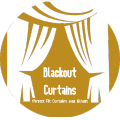When it comes to interior design, Arabic curtains play a significant role in adding warmth, character, and elegance to homes and spaces. In the vibrant neighborhood of Arabic Curtains Al Safa, Dubai, these curtains find their place, seamlessly blending tradition with contemporary aesthetics. Arabic curtains in Al Safa, Dubai provide a perfect combination of tradition and style.
What Are Arabic Curtains?
Arabic curtains, also known as Majlis curtains, draw inspiration from the intricate designs found in traditional Arabic architecture. They feature bold patterns, geometric motifs, and rich colors that evoke a sense of opulence and history. These curtains are not just functional; they are an art form that tells a story of cultural heritage.
Why Choose Arabic Curtains?
- Cultural Connection: Arabic curtains connect you to the region’s heritage. Whether you’re a local or an expatriate, these curtains bring a piece of the Middle East into your home.
- Elegance and Sophistication: The elaborate patterns and luxurious fabrics used in Arabic curtains create an elegant ambiance. They transform any room into a regal space.
- Privacy and Light Control: Arabic curtains provide excellent privacy while allowing natural light to filter through. You can adjust them to create the desired level of illumination.
- Customization: From silk to velvet, Arabic curtains come in various materials. You can choose colors, patterns, and sizes that suit your taste and interior design.
Where to Find Arabic Curtains in Al Safa, Dubai?
Several reputable shops in Al Safa offer a wide range of Arabic curtains. Here are a few options:
- Imperial Collection Dubai: Located on Al Quoz Ind. Area # 3 near Lulu HyperMarket Imperial Collection is a trusted shop for high-quality curtains. They specialize in residential and commercial curtains, including Roman blinds and roller blinds.
- Curtains Tailoring dubai: Situated in Al Quoz, Curtains Tailoring produces custom-made curtains. Their experienced team caters to both homes and projects, ensuring top-notch quality.
- Curtain in Dubai: With a showroom on 4 Street 2 Curtains in Dubai offers innovative designs and fabric variety. Their curtains reflect individuality and style.
Transform Your Space
Arabic curtains in Al Safa, Dubai, are more than mere window coverings. They infuse your living or working space with culture, beauty, and a touch of luxury. Whether you’re decorating a cozy home or a grand office, consider embracing the timeless charm of Arabic curtains. Remember, when choosing Arabic curtains, let your personal style shine through.
What are the popular colors for Arabic curtains?
- Deep Reds and Burgundies: These evoke warmth, passion, and a touch of opulence. They’re perfect for creating a cozy and inviting atmosphere.
- Golden Yellows: Symbolizing wealth and prosperity, golden yellows add a regal touch. They work well with intricate patterns and luxurious fabrics.
- Royal Blues: Associated with elegance and sophistication, royal blues create a striking contrast against lighter walls or furnishings.
- Emerald Greens: These shades bring a sense of nature indoors. They’re refreshing and harmonize beautifully with wooden elements.
- Neutral Tones: Beige, taupe, and sand colors provide a timeless backdrop. They allow other design elements to shine while maintaining a balanced look.
Why do we say Arabic curtains as a Majlis Curtains Important?
Majlis curtains, also known as “majlis khayma” or “majlis tent,” are traditional curtains used in the Middle East, particularly in Arabic-speaking countries. These curtains feature intricate motifs and patterns, often designed from high-quality materials like silk or cotton. They hold significant historical value, closely tied to Middle Eastern customs and culture. Early versions of Majlis curtains used wool-made fabrics to create privacy and separate guests and family members at home. Today, they continue to add elegance and cultural charm to interiors, reflecting traditional Arabic art and architecture.

